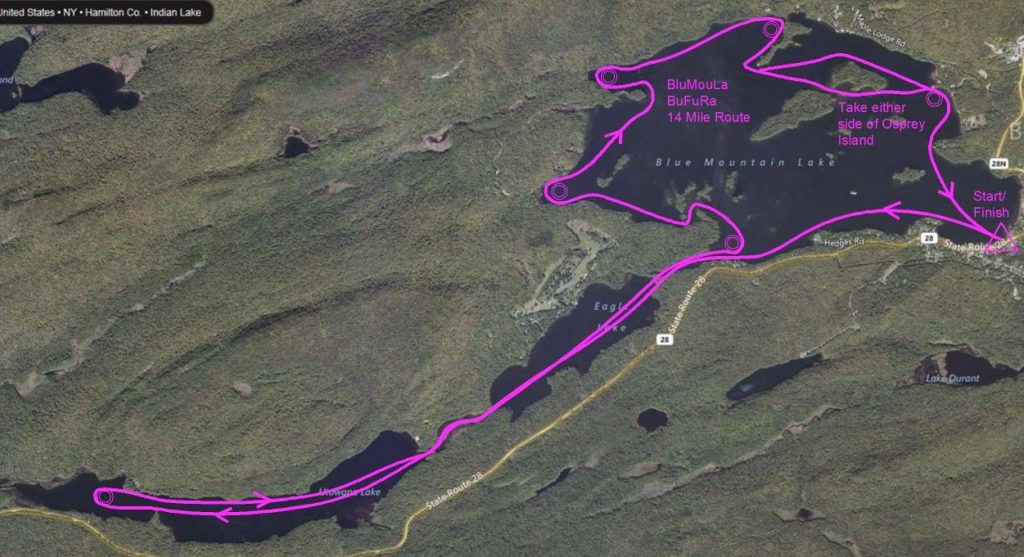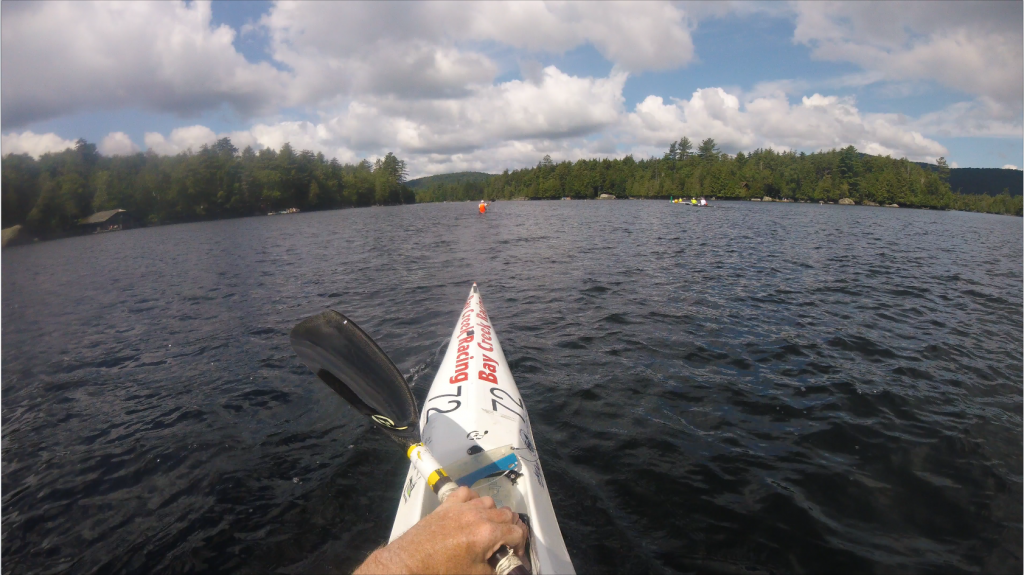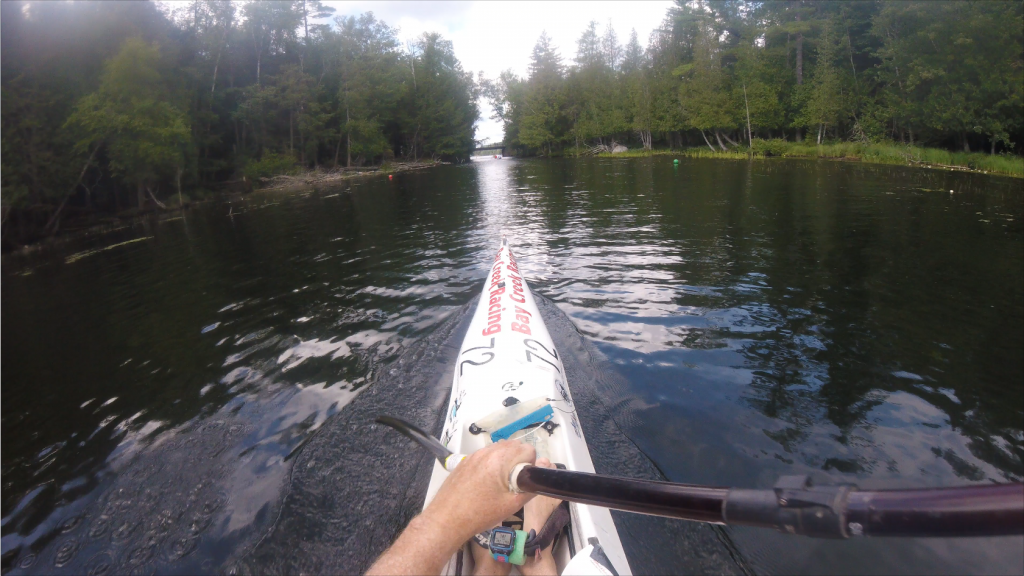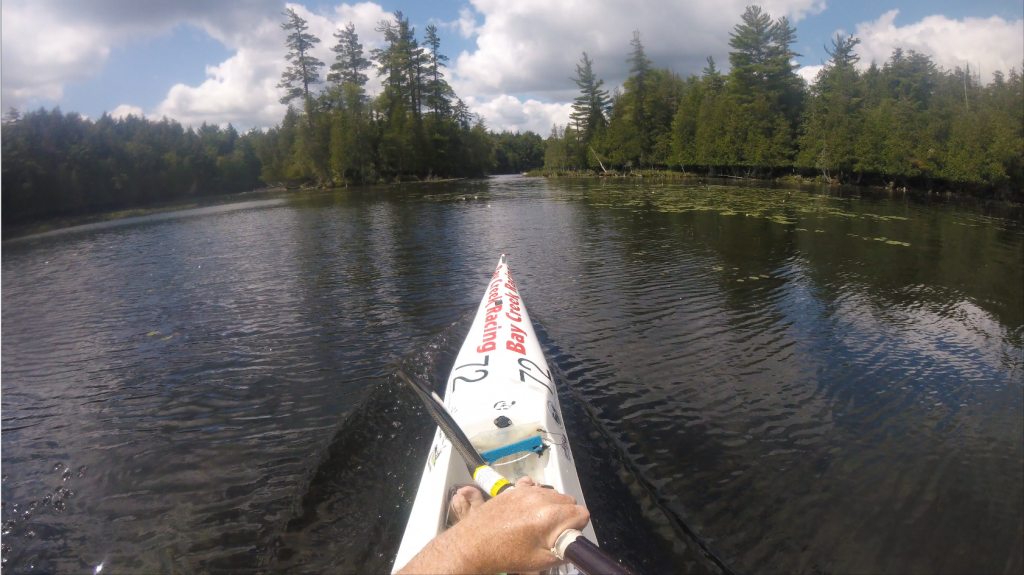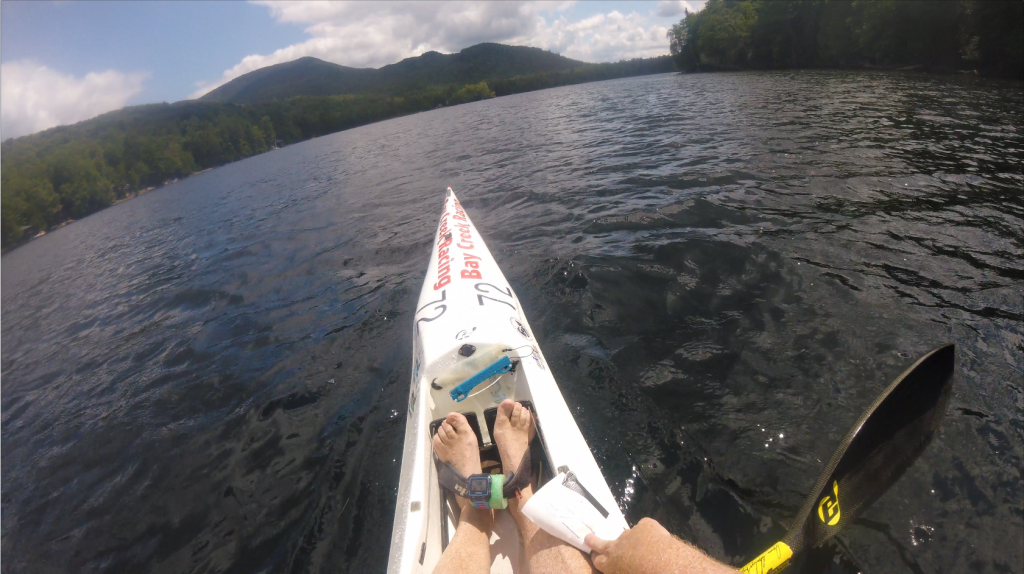The Preliminaries – Getting a boat
This weekend is the USCA (United States Canoe Association) National Championships. Yesterday was sprint races and youth, so I didn’t go. Today is for Men’s Touring Kayaks (and a bunch of other categories, like Women’s Unlimited Kayak). And I wanted to compete. The regulations for Touring Kayak, as stated on two separate pages on the USCA website) say the boat has to be at least 18″ wide at the widest spot at the 4″ waterline. My normal boat, an Epic V10 Sport, is just slightly narrower than that – their official spec has them wider, but that’s not at the 4″ waterline. So for over a month now I’ve been asking anybody I know with an Epic V8 Pro if I can borrow it. I started by asking Roger at the Electric City race, and he said yes. But then I heard from Eric Young that Roger had said yes to him earlier. So I asked Frank Cabron, who didn’t know that there was going to be a touring race this year, but once he heard he was quick to say he was going to use his V8 Pro. I asked several of the Baycreek paddlers, since a whole bunch of them have upgraded to V8 Pros this year. I asked Ken if I could borrow the Baycreek demo V8 Pro, in spite of the fact that it is “club layup”, which makes it way heavier than everybody else’s. Epic doesn’t even make the “club layup” anymore because nobody liked it, so I can’t quote you the official weight difference between it and the ultra and elite layup boats I was trying to borrow. Then last weekend Roger once again emailed me to say that Eric had decided not to borrow his boat, so it was available if I wanted it. I immediately wrote him back and asked him how I could get it – but then he never responded to my email. So I went back to Ken. And Ken was under the impression that he’d promised it to Jim, not me. I knew that Jim was paddling K2 today, so I straightened that out and picked up the Pro. I found out later than Roger had heard I had borrowed Ken’s boat, so I didn’t need his and loaned it to Scott Visser. Meanwhile Mike had also been unable to secure a V8 Pro and was going to have to paddle his extremely heavy West Side Boat Shop EFT. EFTs aren’t normally terribly heavy, but he’d taken it to somebody to have it re-gelcoated and the guy had added a very thick layer of resin and gelcoat.
Then last night, Frank emails Mike and I to say that he’d just been at the race venue and had talked to one of the official jiggers who said that the V10 Sport now qualifies as Touring class. I couldn’t believe that, so I went to the USCA website, and on a page titled “USCA Kayak Specs (from the Competition Rules)” and another one called “USCA K1 Touring Kayak Specs and Models”, I found the official rule – 20 feet maximum length, and at least 18 inches at the 4 inch waterline. I even built a hillbilly jig out of three pieces of wood and verified that my V10 Sport is too narrow under that rule. What I hadn’t counted on, however, is how bad some organizations are at updating their websites – it turns out that buried in a 31 page PDF copy of the Competition Rules, there is the updated rule: 20 feet maximum length and at least 17 at the 4 inch waterline. But because it’s a PDF, it wasn’t what came up on a Google search, just two separate pages, including the one labelled “from the competition rules”. So I could have skipped all the hassle and false leads of trying to borrow a V8 Pro, and had a lighter faster boat. Oh well, only one of the boats that beat me was legal under the new rules but not the old one, so I guess I don’t have much to complain about.
Because of the doubt about the rules, Mike and I brought our “touring” boats, the EFT and the V8 Pro respectively, because we were driving together and so could only bring two boats. Frank was coming alone with two racks on his car, so he brought both his V8 Pro (in ultra layup) and his V10 Sport (in elite layup). And when he confirmed the new rule, he said he was going to paddle the V10 Sport. But Mike was quicker off the gun than me and asked Frank for his V8 Pro, so he ended up in a much lighter boat than me. Like I said, I don’t know the official weight difference, but the ultra layup is 8 pounds lighter than the performance layup, and club is heaver than the performance.
The Start
Today is Friday, and tomorrow is both on the weekend and is Men’s Unlimited, so of course the field was a little smaller today. So all the touring class kayaks started in one giant wave instead of being separated by age class like they were at the last USCA nationals that I went to. I don’t know what tomorrow will be like – I guess I’ll find out.
The race course is a bit convoluted – it’s a giant Y shape and we had to do it twice. But we started basically at the top of the leg of the Y, headed down towards the bottom, did a buoy turn and went around the left arm and then the right arm before returning to the bottom of the leg, and then doing it again. The distance between the start and the first buoy turn was just barely enough to get things spread out a bit so it wasn’t massive carnage. I dread what it’s going to be like tomorrow. The 2016 USCA nationals I think was a bit smarter in that instead of one 180 degree buoy turn, they had two 90 degree turns a distance apart, which allowed a smoother transition to a more ordered line of boats when we turned upstream.
Now I’m typing this from memory, and I haven’t looked at the video yet, so I’m probably going to get some details wrong. But by the time we passed back through the start, we had a pack with young Scott Visser in the lead, then a bunch of us strung out in a line behind him. Dave Wiltey was there in his usual West Side Boat Shop boat (possibly an EFT), and I knew from experience that he hasn’t going to take a turn in the lead. There was another guy in a club layup V8 Pro, a guy in an elite layup V10 Sport, and a guy with a blue boat that when I originally saw it from afar I thought it was a Mohican (which is a very expensive and very formidable boat) but as I got closer I found out it was home made and looked it. He also had terrible technique, which made it even more annoying that he was ahead of me. There were probably other people around, but that’s all I remember. Eric Young was way ahead, as expected, and way out ahead of him was this guy who looked like an Olympian, who just kept pulling further and further ahead and was soon out of sight.
At the buoy turn, Wiltey and the blue boat guy both had over-stern rudders, and they turned like they were in sea kayaks – ie they put on the brakes on the inside and did big sweeps on the outside. Unfortunately I was behind them which meant I had the choice of slowing down before the turn to avoid crashing into them or trying to go around outside them in the turn. I ended up losing some ground on them and having to sprint to catch up. But a new order quickly established itself. Scott was still leading. The blue boat guy was second. I didn’t want to be third so I was on his side wake. I think the other V8 Pro guy was next, but don’t hold me to that. Blue boat guy’s technique was bad, and so I couldn’t get in sync with him and we kept clashing paddles. He didn’t get his paddle very deep in the water, which meant he had to paddle faster than me to go the same speed. Which meant every few strokes I’d have to pause so I didn’t clash paddles with him, although I didn’t always get it right.
This status quo pretty much lasted until we were approaching the buoy turn at the other arm of the Y. Dennis Moriarty came charging past. I know from previous conversations exactly what he was doing, too – he was trying to give me a wake to ride and break up the pack. And it actually worked. I got on his wake and pulled away from the rest of the pack, except I couldn’t hold his wake. Not too far after the turn I could feel that the whole pack was now on my wake, while Dennis pulled further and further away. Not optimal that I was leading, but I kind of like that feeling of being in front and being stronger than everybody else.
And So On, and So On
The buoy turns were great, because you got to see everybody coming in the other direction, regardless of whether they were behind you or in front of you. Eileen Visser, Scott’s mom, had started a wave or two behind us, and she was always cheering on Scott as we passed. That’s how I realized that after the right arm buoy turn that we were dropping Scott. The pack was down to just five or so of us. It looked to me like Dennis was going almost the same pace as Eric Young, or maybe even closing the gap a bit.
For all the way down to the foot of the Y, I was leading. Again, not smart strategically but man it felt good. At the turn, I ended up side by side with the blue boat guy. As we passed the dock where we’d put in at race headquarters we could hear an announcer call out our names, and he said something about a “strategic battle going on”, which was cool. That’s when I found out the guy in the blue boat is named Steve and the guy in the other V8 Pro was named Bob. Steve and I were side by side, but sort of using each other’s wakes, but he said something about the freeloaders we had behind. The freeloading was so bad that I heard Dave and Bob having a conversation that was something about a bear and somebody’s fiancee.
Again at the right arm’s buoy turn I had to go outside around the “sea kayak style” turners, sprint to catch them. But again, after catching them back up, I would recover a bit and decide that I could go faster than these guys were doing, and take the lead again. Not smart.
About half way between the left side buoy turn and the “crotch” of the Y, I suddenly felt like I was completely blown. First Steve and Dave jumped ahead of me, then a minute or two later Bob and the guy in the V10 Sport Elite dropped me. I was barely keeping it together – my speed was terrible and my arms felt like they were going to drop off. I would have given anything to just quit right there. But I didn’t, although I did stop paddling for a second or two to try and regather something.
Dave and Steve looked like they were catching up to Dennis. That was a surprise – Dennis is a triathlete and is a lot fitter than most of the rest of us. They didn’t quite manage it, but if the race had been much longer they might have. According to the results they were only 12 seconds behind him at the finish, and of course Dave out-sprinted Steve. That’s what he does.
Bob, who I’d realized some minutes prior was the only one in our pack that was in my age class, ended up finishing 20 seconds ahead of me. Judging from the results, the guy in the V10 Sport was named Bill and he finished 18 seconds behind Dave and 29 seconds ahead of Bob.
I ended up second in my age class behind Bob. It was a hard fought race and I’m pretty happy with it, but I wish I’d paced myself better and not blown up so badly. Like I tell anybody who will listen, I had a great 10 mile race – shame it was a 12.5 mile course.
Now I’ve got to somehow recover and prepare for tomorrow.

